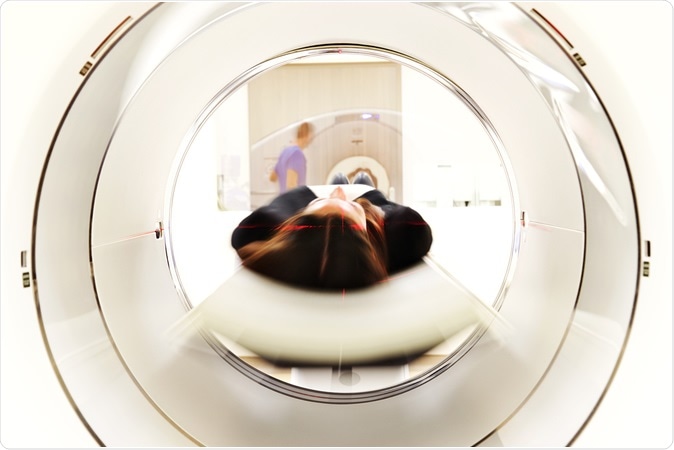There are ethical dilemmas in cases where a person is unresponsive after a major trauma but is awake within (unresponsive wakefulness syndrome) and when a person is brain dead or truly unconscious. In these cases stopping life support can be a tough decision.
Researchers collaborating from different centres in France, Belgium, the United Kingdom, the United States, and Canada have come up with a solution. Their experiment shows the brain picture of a brain when he or she is awake versus when they are asleep or unconscious. The results of the study were published in the latest issue of the journal Science Advances.

Image Credit: VILevi / Shutterstock
The team looked at the functional MRI or fMRI scans of 159 individuals from four different medical centres at Paris, Liège, New York, London, and Ontario. These patients were unconscious in one form or another. The team also included a comparator of 47 healthy volunteers who were scanned when awake and after being temporarily sedated with general anesthesia. The other 112 patients with severe brain injury were also included in the study. The last group of participants were divided into two groups - minimally conscious patients showing small flickers of awareness of their surroundings and rest with unresponsive wakefulness syndrome or in a vegetative state. Thus the group of study participants were 59 people in a minimally conscious state, 53 patients in a vegetative state and 47 healthy volunteers.
The fMRI results of all of these individuals gave clues as to the state of the brain waves when a person is awake and conscious. They noted that there were four significantly different and distinct patterns of brain waves associated with cognitive thought within the brain. There was a complex interplay of neural networking between 42 regions of the brain depending on the level of complexity of thought the brain was processing. These four complex patterns were;
- Highly complex pattern 1- seen in the completely healthy volunteers
- Pattern 2 and pattern 3 of intermediate complexity was seen in some from each of the study groups
- Least complex pattern pattern 4 – was noted in more commonly completely unresponsive patients
Results also showed that those in the vegetative state could also show pattern 1 in their brains. These individuals were given a mental imaging task asking them to imagine moving their hand. The brain activities immediately sprang into action, the researchers note. This shows that despite their vegetative and unresponsive state their brains remain active.
According to authors these differences in brain waves show that it is possible to tell a truly unconscious person apart from the awake person. Study author Davinia Fernández-Espejo, a neuroscientist at the University of Biringham in the UK in a statement said, “Importantly, this complex pattern disappeared when patients were under deep anesthesia, confirming that our methods were indeed sensitive to the patients’ level of consciousness and not their general brain damage or external responsiveness.”
The team believes this could be the first step to the development of markers of consciousness and also help doctors and families of vegetative patients to understand their needs. Fernández-Espejo added, “In the future it might be possible to develop ways to externally modulate these conscious signatures and restore some degree of awareness or responsiveness in patients who have lost them, for example by using non-invasive brain stimulation techniques such as transcranial electrical stimulation.”